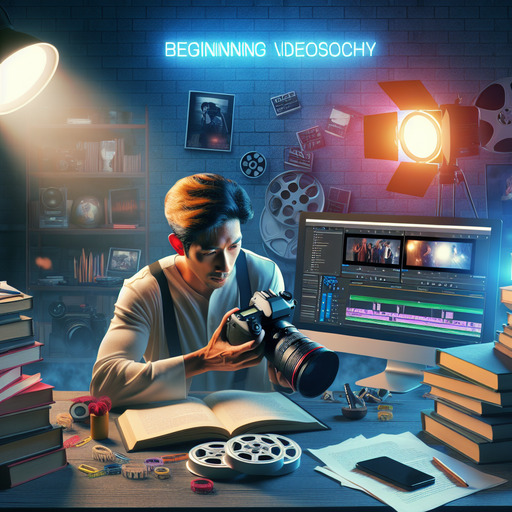
-
Table of Contents
Ready to dive into the world of videography? Discover essential tips and techniques in our Beginner’s Guide to Videography. Start your journey today and unlock your creative potential! Learn More
Introduction
Videography is an exciting and dynamic field that allows individuals to capture and create compelling visual stories. Whether you’re looking to document personal experiences, create content for social media, or embark on a professional career, getting started in videography can be both rewarding and challenging. This beginner’s guide will walk you through the essential steps to kickstart your journey in videography, from understanding the basic equipment and techniques to mastering the art of storytelling and editing. By the end of this guide, you’ll have a solid foundation to begin creating your own captivating videos.
How to Get Started in Videography: A Beginner’s Guide
Embarking on a journey into the world of videography can be both exciting and daunting. As a beginner, understanding the fundamental aspects of videography is crucial to developing your skills and creating compelling visual stories. To get started, it is essential to first familiarize yourself with the basic equipment. A good quality camera is the cornerstone of videography. While professional-grade cameras can be expensive, many entry-level options offer excellent features for beginners. Additionally, investing in a sturdy tripod will help stabilize your shots, ensuring smooth and professional-looking footage.
Once you have your equipment, the next step is to learn the basic principles of composition and framing. Understanding how to frame your shots can significantly impact the overall quality of your videos. The rule of thirds, for instance, is a fundamental guideline that can help you create balanced and visually appealing compositions. By dividing your frame into nine equal parts and placing your subject along these lines or their intersections, you can achieve a more dynamic and engaging shot.
Lighting is another critical aspect of videography that can dramatically affect the mood and quality of your videos. Natural light is a great starting point for beginners, as it is readily available and can produce beautiful results. However, learning to manipulate artificial lighting can also be beneficial. Experimenting with different light sources, such as softboxes or LED panels, can help you understand how light interacts with your subjects and how to create the desired atmosphere in your videos.
In addition to mastering the technical aspects, developing a keen sense of storytelling is vital. A well-crafted story can captivate your audience and convey your message effectively. Start by planning your shots and creating a storyboard. This will help you visualize the sequence of events and ensure that your narrative flows smoothly. Moreover, understanding the basics of editing is essential for piecing together your footage into a cohesive story. Familiarize yourself with editing software such as Adobe Premiere Pro or Final Cut Pro, and practice cutting, trimming, and arranging your clips to create a polished final product.
Sound quality is often overlooked by beginners, but it is just as important as the visual elements of your video. Investing in a good microphone can significantly enhance the audio quality of your recordings. Additionally, learning to capture clean audio and understanding the basics of sound design can elevate your videos to a professional level. Pay attention to background noise and ensure that your audio levels are consistent throughout your video.
As you continue to practice and refine your skills, seeking feedback from others can be incredibly valuable. Joining online communities or local videography groups can provide you with constructive criticism and support from fellow enthusiasts. Moreover, watching tutorials and studying the work of experienced videographers can offer inspiration and insights into different techniques and styles.
Finally, it is important to remain patient and persistent. Videography is a craft that requires time and dedication to master. Do not be discouraged by initial setbacks or challenges. Instead, view them as opportunities to learn and grow. By continuously honing your skills and experimenting with new ideas, you will gradually develop your unique style and voice as a videographer.
In conclusion, getting started in videography involves a combination of understanding the technical aspects, developing storytelling skills, and seeking continuous improvement. With the right equipment, knowledge, and dedication, you can embark on a rewarding journey of creating captivating visual stories.
Q&A
1. **What equipment do I need to start in videography?**
To get started in videography, you will need a camera (DSLR, mirrorless, or a high-quality smartphone), a tripod for stability, an external microphone for better audio quality, lighting equipment (such as LED lights or softboxes), and video editing software (like Adobe Premiere Pro, Final Cut Pro, or DaVinci Resolve). Optional but useful accessories include extra batteries, memory cards, and a camera bag.